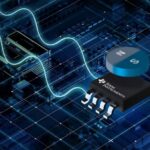In April last year, Mario Caroni, a senior researcher at the Italian Institute of Technology, and others published a paper in the American journal “Advanced Materials“, claiming that they have developed the world’s first rechargeable and fully edible battery. They stated that edible electronic devices will have a significant impact on gastrointestinal monitoring and treatment, as well as food quality monitoring.

Edible electronic components are expected to improve the current situation in healthcare and emergency rescue.
This team is not alone in their endeavor. According to recent reports from the Physics Organization website, Dario Floriano, director of the Intelligent Systems Laboratory at the Swiss Federal Institute of Technology, is currently conducting a bold research project: creating edible robots and digestible electronic products.
Floriano pointed out that, no matter how incredible it may seem, the combination of food science and robotics will have a significant impact on fields such as healthcare and environmental protection.
Breaking the Boundaries between Food and Robots
Floriano stated that the idea of combining food and robots originated from a comment by a postdoctoral researcher, Xin Huchun (transliteration), in 2017. Xin Huchun pointed out that the main difference between robots and biological systems is that robots cannot be eaten by other organisms. Floriano thus began to ponder how to break the boundaries between food and robots.
To this end, he led a project called “ROBOFOOD”. The project aims to replace rigid and cold electronic components with edible parts, thereby breaking the boundaries of robot research by creating edible robots and food-like behaviors. The project is scheduled to last for 4 years, until September 2025. Team members include scientists from Switzerland, Italy, the Netherlands, and the United Kingdom.
The “ROBOFOOD” team has collaborated with scientists from Wageningen University in the Netherlands to develop a drone whose wings are made of rice cakes glued together with edible oil and chocolate.
Floriano stated that they have developed the world’s first drone with edible parts reaching 50%. This drone can be used for emergency rescue operations, not only for locating missing persons or animals but also for transporting essential food or medicines. Moreover, the drone itself can be eaten, and its edible parts meet the standards for food needed during emergencies proposed by the United Nations.
Of course, the current challenge facing this drone is the need to use sufficiently sturdy edible materials to make the wings withstand attacks from wind, rain, and high temperatures.
Boosting Real-Time Diagnosis in the Health Field
The project team has gone further, expanding this concept to the health field. They collaborated with Professor Jonathan Rossiter, a robotics expert at the University of Bristol in the UK, to develop a digestible sensor that can help treat or monitor intestinal diseases.
Although ingestible devices, such as pills containing cameras or digital systems, are already used in healthcare, these devices currently contain indigestible components that need to be retrieved after use. Unlike these intestinal devices, the new sensor does not need to be excreted or removed from the patient’s body. The ease of digestion also avoids the risk of material residues remaining in the body.

The research team stated that although further testing and development are needed, this sensor demonstrates that manufacturing digestible electronic components is feasible.
Reducing Electronic Waste for Environmental Protection
The research team stated that in addition to the healthcare field, the “ROBOFOOD” project will also make significant contributions to environmental protection. Food-grade materials and processes that are easy to decompose or digest help address the growing problem of electronic waste worldwide.
This is particularly relevant to the issue of discarded batteries. It is estimated that 3 billion batteries are discarded in the United States every year. Most of these batteries end up in landfills, where they leak toxic substances into the environment.
Mario, who is also the head of the “ROBOFOOD” team, led the development of the world’s first fully edible rechargeable battery, with almost all components being edible. Specifically, the battery anode and cathode are made of riboflavin (vitamin B2) and quercetin, respectively, the electrolyte is water-based, and the separator (permeable membrane between the anode and cathode, preventing short circuits) is made of seaweed.
Researchers stated that once fully charged, this 0.65-volt battery can provide a current of 48 microamps in 12 minutes. Although it may not sound like much, it is enough to power small electronic devices such as low-power LEDs. Connor Berland, a battery technology development physicist at the University of Sussex in the UK, pointed out that this research demonstrates that rechargeable batteries can be made entirely from edible materials.
According to Latest, in another breakthrough, the “ROBOFOOD” team developed an edible actuator that can convert energy into mechanical force to assist robots in functioning. In other words, when a robot equipped with this actuator is ingested by a person, the actuator will make the robot do something useful. This also marks a major step forward for the research team in realizing fully functional and edible robots.












